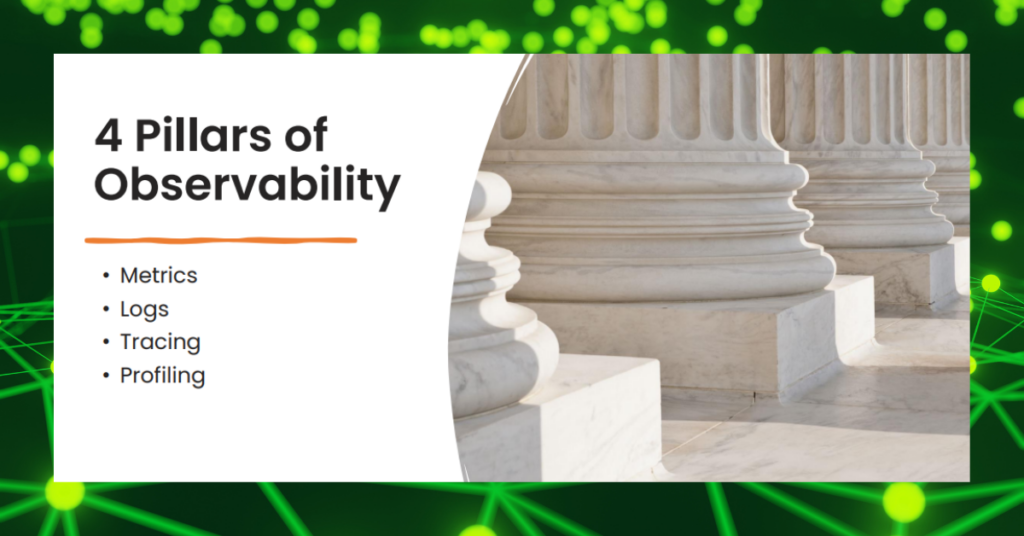Peter Zaitsev, Co-founder of Coroot, aptly highlighted the dramatic shift in application architectures over the past two decades. Once monolithic and manageable, applications have transformed into intricate webs of microservices. This evolution has introduced unprecedented challenges in understanding system behavior and ensuring optimal performance.
In the early 2000s, applications were relatively simple, often consisting of a monolithic structure interacting with a monolithic database. IT teams could effectively monitor and troubleshoot by focusing on a limited number of servers. However, the landscape has drastically changed. Today’s applications are distributed systems composed of numerous microservice instances, potentially spanning tens of thousands in hyperscale environments. This exponential growth in complexity renders traditional monitoring methods inadequate.
To illustrate this point, Peter drew an analogy between flight systems and software applications. The intricate array of dashboards in an aircraft cockpit provides pilots with real-time insights into various systems, enabling them to safely navigate and respond to potential issues. Similarly, observability equips developers with the necessary tools to understand the intricacies of their applications and proactively address problems.
The imperative for robust observability is underscored by its impact on three critical areas: availability, performance, and cost management. Ensuring uninterrupted service delivery, optimizing application speed, and controlling cloud expenses are all directly influenced by the effectiveness of observability practices.
Types of observability and their focus

Effective observability is essential for several reasons:
- Performance: By monitoring key performance indicators (KPIs), developers can identify and address bottlenecks that impact user experience.
- Availability: Observability helps ensure that applications are accessible and functioning as expected.
- Cost management: Understanding resource utilization through observability can help optimize costs, especially in cloud environments.
- Security: While security is a broad topic, observability plays a role in detecting anomalies and potential threats.
Understanding observability: What we can observe?
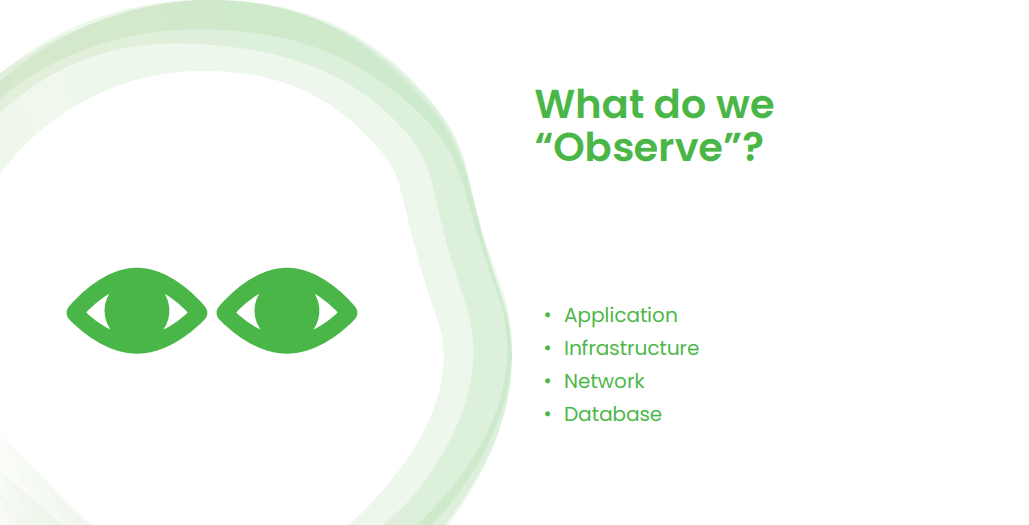
When considering observability, it’s essential to understand the different types of systems available in the market. These systems can be broadly categorized as follows:
Application observability:
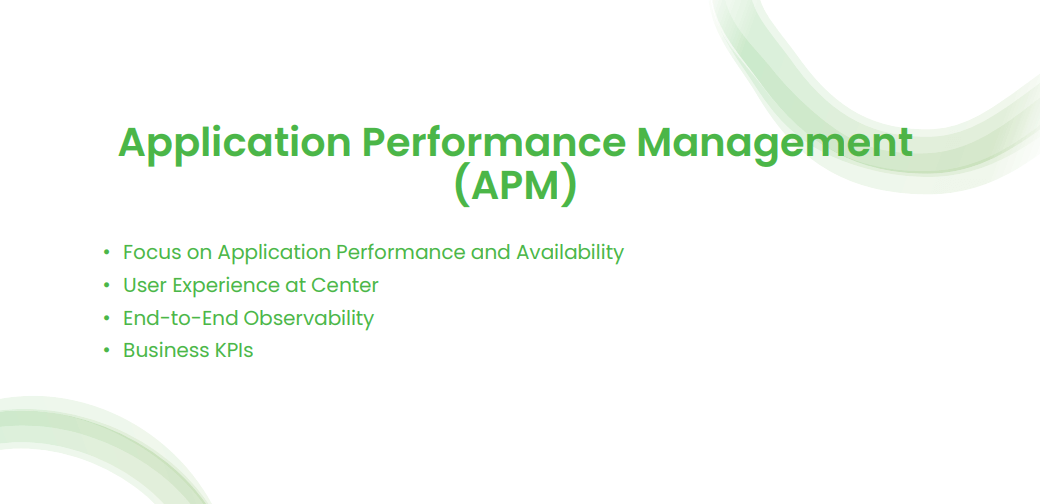
- Application Performance Management (APM): Primarily concerned with the performance and availability of applications from the user’s perspective. APM tools help identify bottlenecks and issues that impact user experience.
- End-to-end observability: Tracks the entire journey of a request, from user interaction to backend systems, to pinpoint problems at any level.
- Business-level KPIs: Aligns observability with business goals by monitoring metrics that directly impact revenue, customer satisfaction, or other key performance indicators.
Infrastructure Observability:
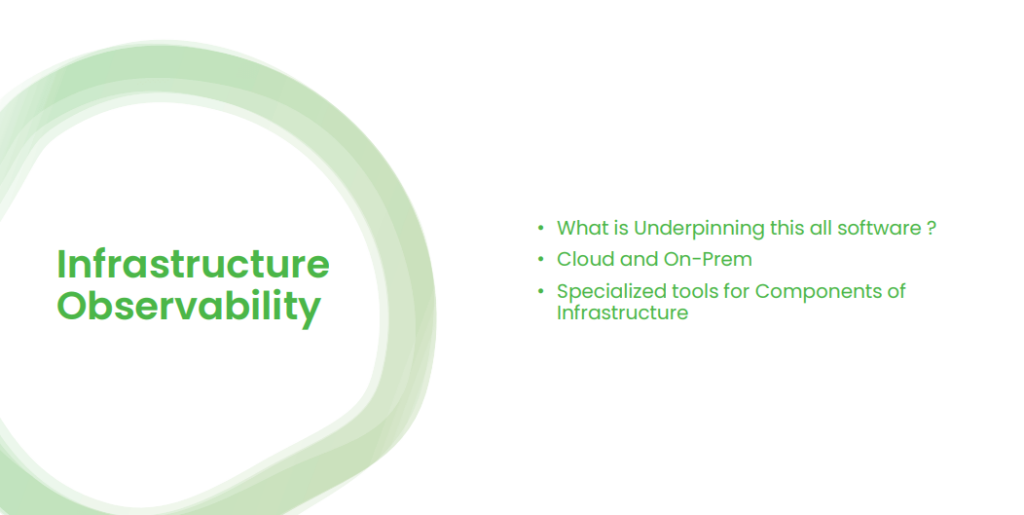
- Cloud observability: Monitors cloud-based resources and services to ensure optimal performance and cost-efficiency.
- On-premises observability: Tracks the health and performance of infrastructure components within an organization’s data centers.
- Network observability: Focuses on network performance, identifying issues like latency, packet loss, and outages that impact application availability.
- Database observability: Provides insights into database performance, query optimization, and resource utilization to prevent bottlenecks.
While these categories provide a general framework, it’s important to recognize that real-world systems often require a combination of these approaches. For instance, to fully understand a performance issue, it might be necessary to examine application logs, infrastructure metrics, and database query performance.
Leveraging observability for proactive and reactive problem-solving
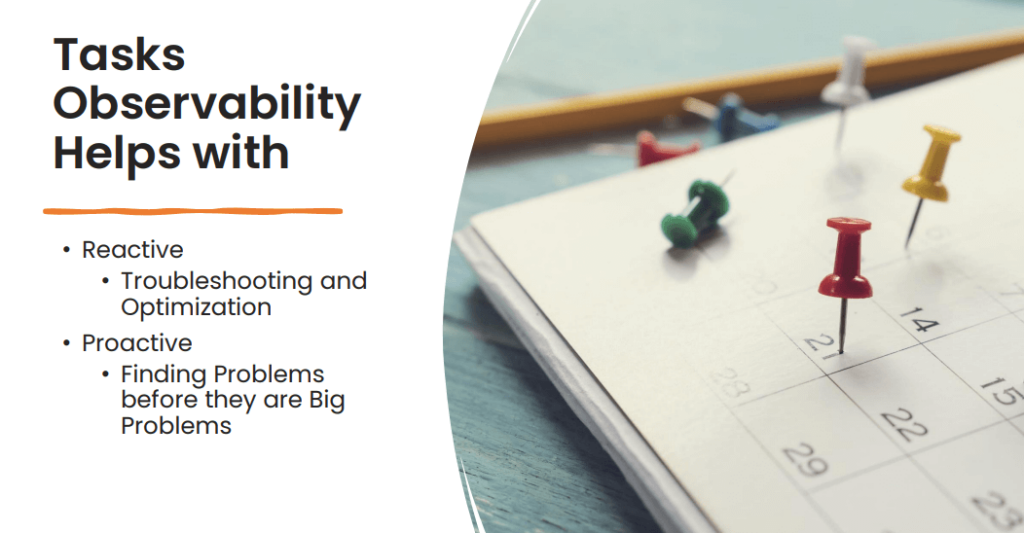
Observability can be approached from two primary angles:
Reactive observability: Troubleshooting and optimization
- Incident response: Quickly identifying and resolving problems that are already impacting the system.
- Performance optimization: Fine-tuning system performance by analyzing performance metrics and identifying bottlenecks.
- Root cause analysis: Determining the underlying causes of issues to prevent recurrence.
Proactive observability: Preventing problems
- Anomaly detection: Using AI to identify unusual patterns in system behavior that may indicate potential issues.
- Predictive maintenance: Anticipating equipment failures or system degradations through data analysis.
- Capacity planning: Forecasting resource needs based on historical usage patterns to avoid outages.
The observability toolkit: Alerting, AI, and testing
The role of alerting
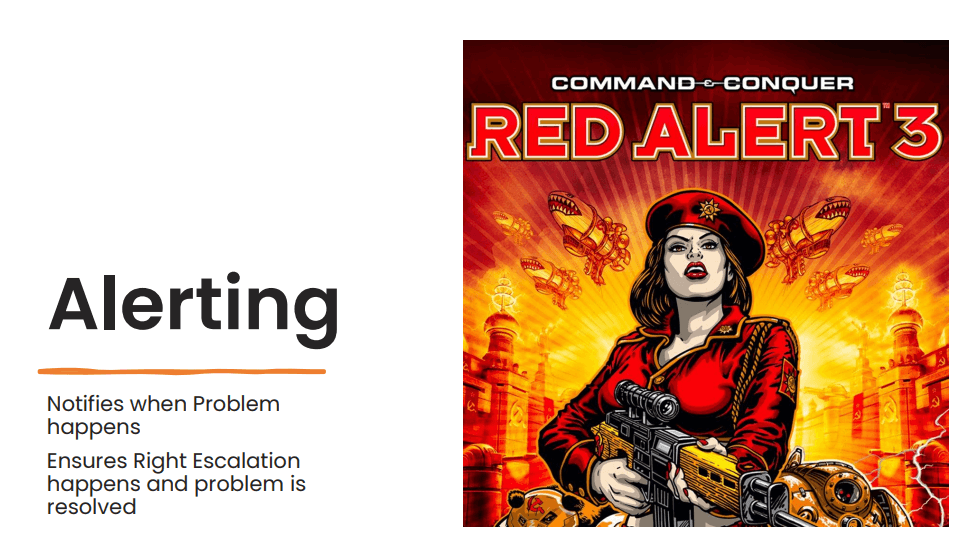
Observability without effective alerting is akin to a car without an alarm system. Alerting mechanisms notify teams of abnormal system behavior, triggering incident response processes. However, effective alerting goes beyond mere notification. It encompasses incident escalation, management, and resolution. Tools like PagerDuty specialize in streamlining these processes, ensuring timely and coordinated responses to critical issues.
The power of AI in observability
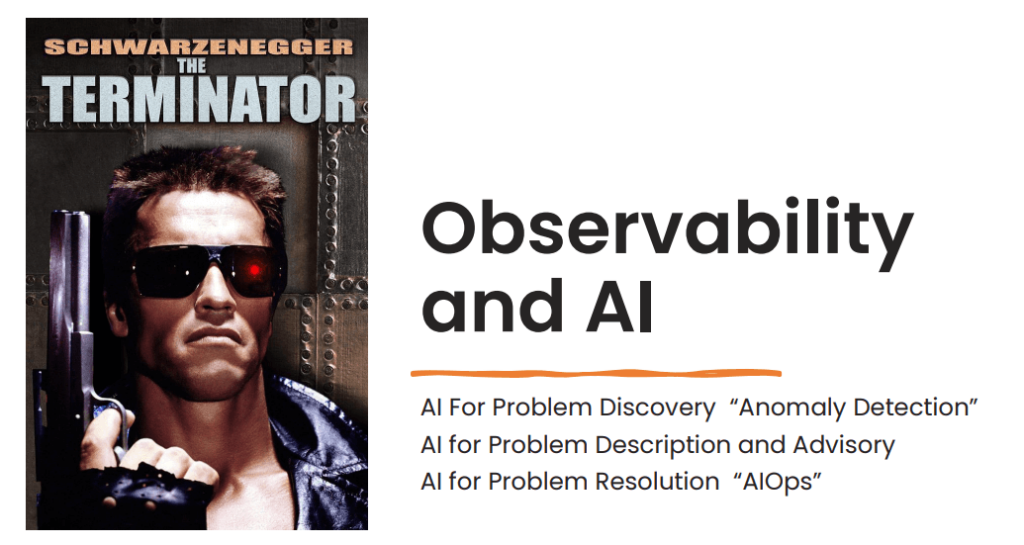
Artificial intelligence is revolutionizing the observability landscape.
- Anomaly detection: AI algorithms can identify unusual patterns in system behavior, flagging potential issues for investigation.
- Prescriptive analytics: Beyond identifying problems, AI-powered systems can provide actionable recommendations to address them.
- AI Ops: While still in its infancy, AI Ops aims to automate incident response and remediation tasks, reducing human intervention.
It’s crucial to note that AI is not a magic bullet. Human expertise remains essential for interpreting AI-generated insights and making informed decisions.
Observability and testing
Observability is not confined to monitoring live systems. It also plays a vital role in testing and quality assurance. By integrating observability tools with test environments, teams can:
- Simulate real-world conditions: Generate synthetic traffic to uncover performance bottlenecks and system vulnerabilities.
- Validate system behavior: Ensure that critical business processes function as expected.
- Accelerate root cause analysis: Correlate test failures with production issues for faster resolution.
Conclusion
This blog post provided a foundational understanding of observability, exploring its evolution, key types, and applications. We’ve touched on the importance of both reactive and proactive approaches, the role of AI, and the integration of testing for comprehensive system visibility.
This is the first part of a series diving deep into the world of observability. To delve further into the core concepts, we encourage readers to explore our upcoming post on the “Four Pillars of Observability.”



